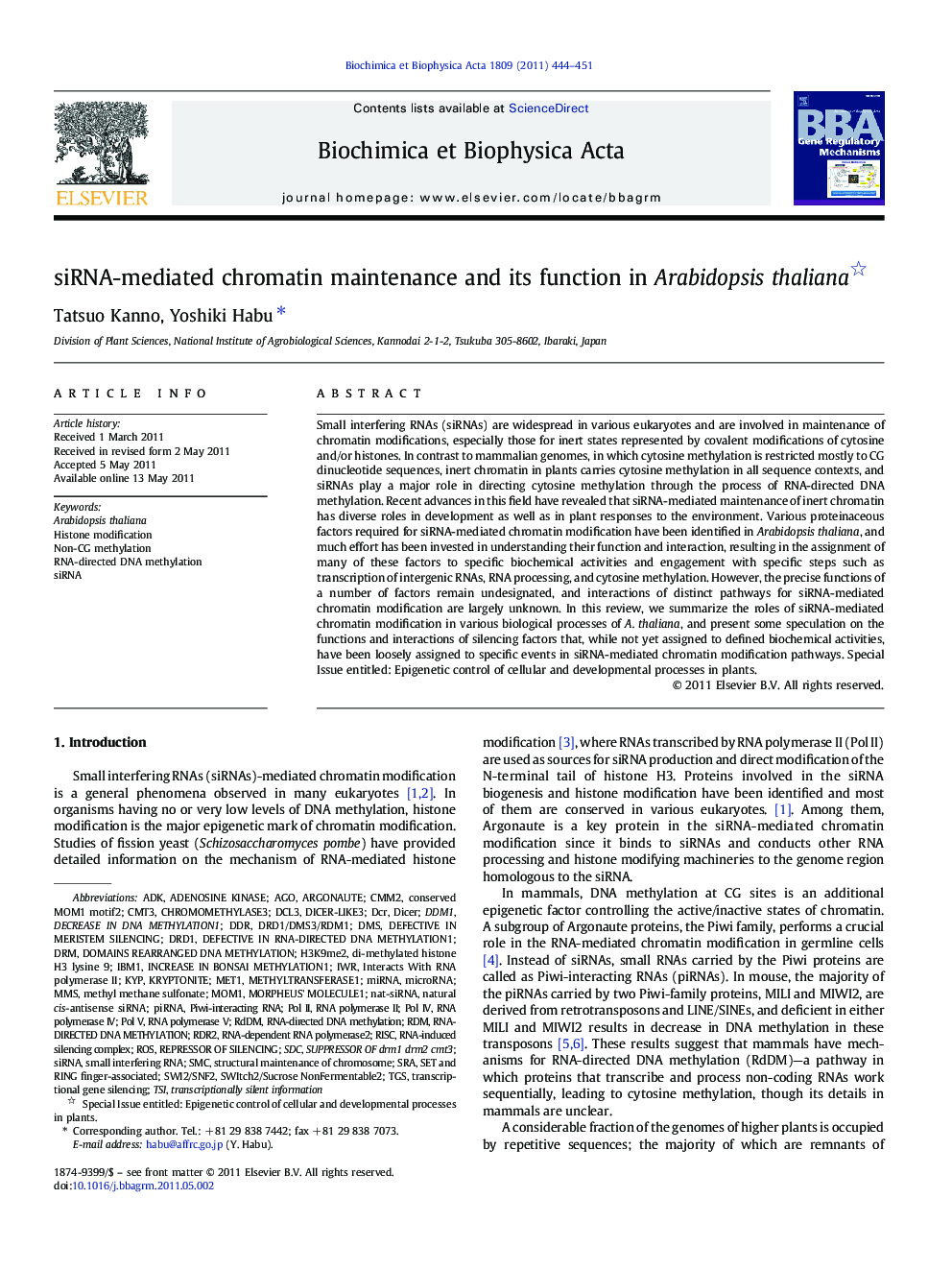| Article ID | Journal | Published Year | Pages | File Type |
|---|---|---|---|---|
| 1946667 | Biochimica et Biophysica Acta (BBA) - Gene Regulatory Mechanisms | 2011 | 8 Pages |
Small interfering RNAs (siRNAs) are widespread in various eukaryotes and are involved in maintenance of chromatin modifications, especially those for inert states represented by covalent modifications of cytosine and/or histones. In contrast to mammalian genomes, in which cytosine methylation is restricted mostly to CG dinucleotide sequences, inert chromatin in plants carries cytosine methylation in all sequence contexts, and siRNAs play a major role in directing cytosine methylation through the process of RNA-directed DNA methylation. Recent advances in this field have revealed that siRNA-mediated maintenance of inert chromatin has diverse roles in development as well as in plant responses to the environment. Various proteinaceous factors required for siRNA-mediated chromatin modification have been identified in Arabidopsis thaliana, and much effort has been invested in understanding their function and interaction, resulting in the assignment of many of these factors to specific biochemical activities and engagement with specific steps such as transcription of intergenic RNAs, RNA processing, and cytosine methylation. However, the precise functions of a number of factors remain undesignated, and interactions of distinct pathways for siRNA-mediated chromatin modification are largely unknown. In this review, we summarize the roles of siRNA-mediated chromatin modification in various biological processes of A. thaliana, and present some speculation on the functions and interactions of silencing factors that, while not yet assigned to defined biochemical activities, have been loosely assigned to specific events in siRNA-mediated chromatin modification pathways. Special Issue entitled: Epigenetic control of cellular and developmental processes in plants.
Research highlights► Plant siRNA-mediated chromatin regulation affects various basic biological processes. ► Silent chromatin is maintained by combinatorial ways involving distinct silencing pathways. ► Structures of undesignated factors predict their functions in chromatin regulation.
